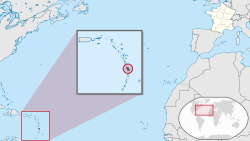Canada

- Proposed state: Republic of Cascadia
- Advocacy group: Cascadia Department of Bioregion [6] [7] [8]

- Proposed state: West Canada (includes Alberta, British Columbia, Manitoba, and Saskatchewan as well as (sometimes) Yukon, the Northwest Territories and Nunavut)
- Political party: Maverick Party, [9] [10] [11] Wildrose Independence Party of Alberta, Buffalo Party of Saskatchewan
- Proposed: Independence for Alberta [12] [13] [14] or unification with the
 United States [15] [16] [17]
United States [15] [16] [17] - Political parties: Independence Party of Alberta, Wildrose Independence Party of Alberta, Republican Party of Alberta (Unification with USA)
- Proposed: Independence for Saskatchewan [18] [19] [20]
- Political party: Buffalo Party of Saskatchewan
- Proposed: Independence for Quebec or autonomy [21] [22] [23] [24] [25]
- Civil organization: Saint-Jean-Baptiste Society, Mouvement national des Québécois et des Québécoises (MNQ), Rassemblement pour l'indépendance du Québec (RIQ), Les Intellectuels pour la souveraineté (IPSO), Mouvement de libération nationale du Québec (MLNQ), Réseau de Résistance du Québécois (RRQ)
- Political parties (secessionist): Parti Québécois, Bloc Québécois, Québec solidaire, Communist Party of Canada, Marxist–Leninist Party of Quebec, Climat Québec
- Political parties (autonomist): Coalition Avenir Québec, Équipe Autonomiste
- Proposed state: British Columbia
- Political party: Progressive Nationalist Party of British Columbia, [26] [27] [28] BC Independence Party
[[Nunavik|![]() Labrador]]
Labrador]]
- Ethnic group: Inuit, Innu and Labradorians
- Proposed: Splitting Northern Ontario out as an independent Province
- Political party: Northern Ontario Party [30] [31] [32]
- Proposed: Breaking Vancouver Island off from British Columbia to create a new province or independence [33] [34] [35]
- Proposed state: Nuxalk Nation
- Advocacy group: Nuxalk Nation (member of the Unrepresented Nations and Peoples Organization until 2008) [36]
- Proposed: Breaking Cape Breton Island off from
 Nova Scotia or have autonomy
Nova Scotia or have autonomy
- Proposed: independence for
 Newfoundland
Newfoundland
- Ethnic group: Heiltsuk
- Proposed: self determination for Heiltsuk Nation [40]
Northeast British Columbia [41]
- Proposed: independence for Northeast British Columbia
- Ethnic group: Blackfoot
- Proposed: independence for
 Blackfoot Confederacy
Blackfoot Confederacy
- Proposed: independence for
- Proposed: statehood for Northwestern Ontario
- Ethnic group:Haida
- Proposed: independence for
 Council of the Haida Nation
Council of the Haida Nation - Advocacy group: Council of the Haida Nation [44]
- Proposed: independence for









